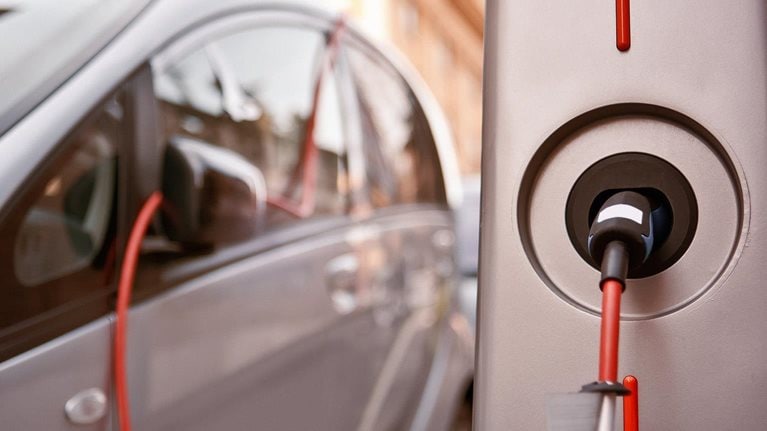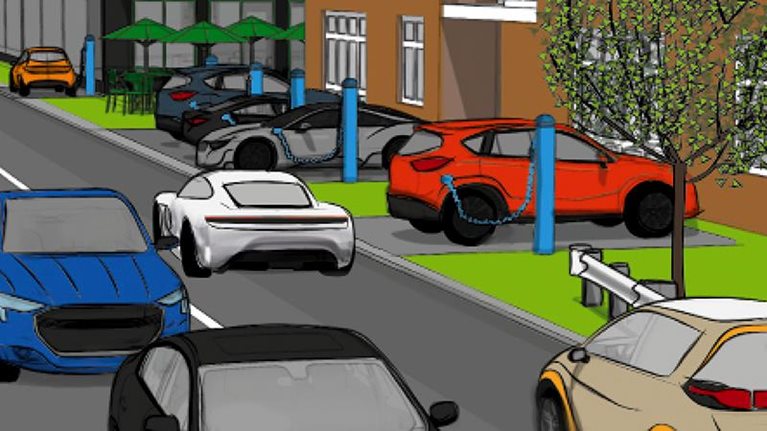China has increased its lead in electric-vehicle (EV) production, according to new McKinsey research (Exhibit 1). Chinese OEMs produced 43 percent of the 873,000 EVs built worldwide in 2016. And the country now has the largest fleet of EVs on the road, overtaking the US market for the first time (see sidebar, “Our methodology”).

China extends EV industry leadership
China extended its industry leadership by making gains across all dimensions of the supply side of EVs, including current and projected production of EVs and their components, such as lithium-ion battery cells and electric motors. One important factor is that the Chinese government provides subsidies to the sector in an effort to reduce fuel imports, improve air quality, and foster local champions. Whereas Chinese OEMs accounted for 40 percent of EV production in 2015, this increased to 43 percent in 2016. Leading Chinese EV manufacturers all ranked among the top ten global EV producers in 2016. Given the rapid increase in production capacity by domestic suppliers, China’s lithium-ion battery-cell players increased their global supply share, reaching about 25 percent in 2016. This is mainly at the expense of Japanese companies, which lost significant market share year on year—though they still accounted for the greatest share in 2016, with around 48 percent. South Korean suppliers expanded their position and now hold 27 percent of the light-vehicle battery-cell market.
Overall, Germany and the United States also perform well in the industry, with no major changes in EV production share (23 percent and 17 percent, respectively). However, these countries saw slight losses with respect to electric-motor production due to China’s expansion.
Stay current on your favorite topics
China’s domestic EV demand grows, while Europe stagnates
In addition to its leading role in EV supply, the market for EVs in China held steady in 2016. For the first time, China has overtaken the US market in the total number of EVs on the road. Cumulative EV sales reached 650,000 units in 2016, and the country increased new registrations for EVs by 70 percent year on year, to around 350,000 units (Exhibit 2). In comparison, Europe saw a sales increase of only 7 percent during the same period, after doubling them the prior year. The stagnation of the European market largely stems from a big drop in new registrations in the Netherlands, attributable to changes in the incentive scheme for plug-in hybrid vehicles. In the United States, EV sales were at 160,000 in 2016, a 37 percent increase.

The sales dynamic in China has been supported by a launch of many new EV models. Roughly 25 new EV models were introduced to the market in 2016. Overall, Chinese customers can now choose from around 75 EV models—the most of any market.
While China outperforms in absolute terms, the country does less well if considered in relative terms: in 2016, EV penetration in the overall light-vehicle market was only 1.4 percent. Norway outperforms here; about one in four cars sold in the country in 2016 was electric. Generous incentives are provided to EV customers in Norway, making EVs more affordable than cars with internal combustion engines. The Netherlands also has relatively high penetration, with an EV share of 5 percent, though sales decreased in 2016 (falling by 48 percent year on year). Sales dropped in 2016 after the country announced it would increase the company car tax for plug-in hybrids. Most other markets still do not exceed the 2 percent threshold. Japan was also affected by very low sales in the second half of 2016. These examples show that e-mobility development varies significantly by country.
Would you like to learn more about the McKinsey Center for Future Mobility?
Markets take different approaches on incentives
Despite the newly introduced EV-purchase incentives in Germany, EV sales increased only 3 percent since the official launch of the purchase premium in May 2016. The German government and the respective OEMs currently offer EV buyers as much as €4,000 for purely battery electric vehicles in an attempt to increase sales (Exhibit 3). But so far the effect has been limited. South Korea also recently increased EV incentives by around €1,600 to stimulate the market, while several other nations announced plans to reduce or phase out subsidies. China, for example, will slowly switch from direct subsidies to nonmonetary incentives after 2020. Currently, it retains one of the most powerful EV-stimulus mechanisms. Certain cities have made EVs exempt from license-plate lotteries and significant registration fees that apply for cars with internal combustion engines. This is a huge lever to make EVs more attractive, especially among younger first-time car buyers. Other countries that have been reducing or phasing out subsidies include Denmark, France, Portugal, and Norway.


China’s electric-vehicle market plugs in
To support the EV dynamic, China has quickly expanded its EV-charging infrastructure, reaching 107,000 public EV-charging outlets by the end of 2016—an increase of 118 percent year on year. Japan and the Netherlands are also investing significantly to build additional charging stations, while progress remains comparatively slow in France, Germany, the United Kingdom, and the United States.
Last year saw an uptick in EV sales in key markets, in line with announcements from several OEMs on new EV strategies and upcoming models. It seems that China, in particular—driven by the involvement of the government and its policies, which affect EV buyers as well as vehicle and component manufacturers—is pushing ahead to develop its EV market and industry. As market share grows and as governments make the issue a priority in many regions, electric mobility will remain high on the agenda of the auto industry in years to come.


